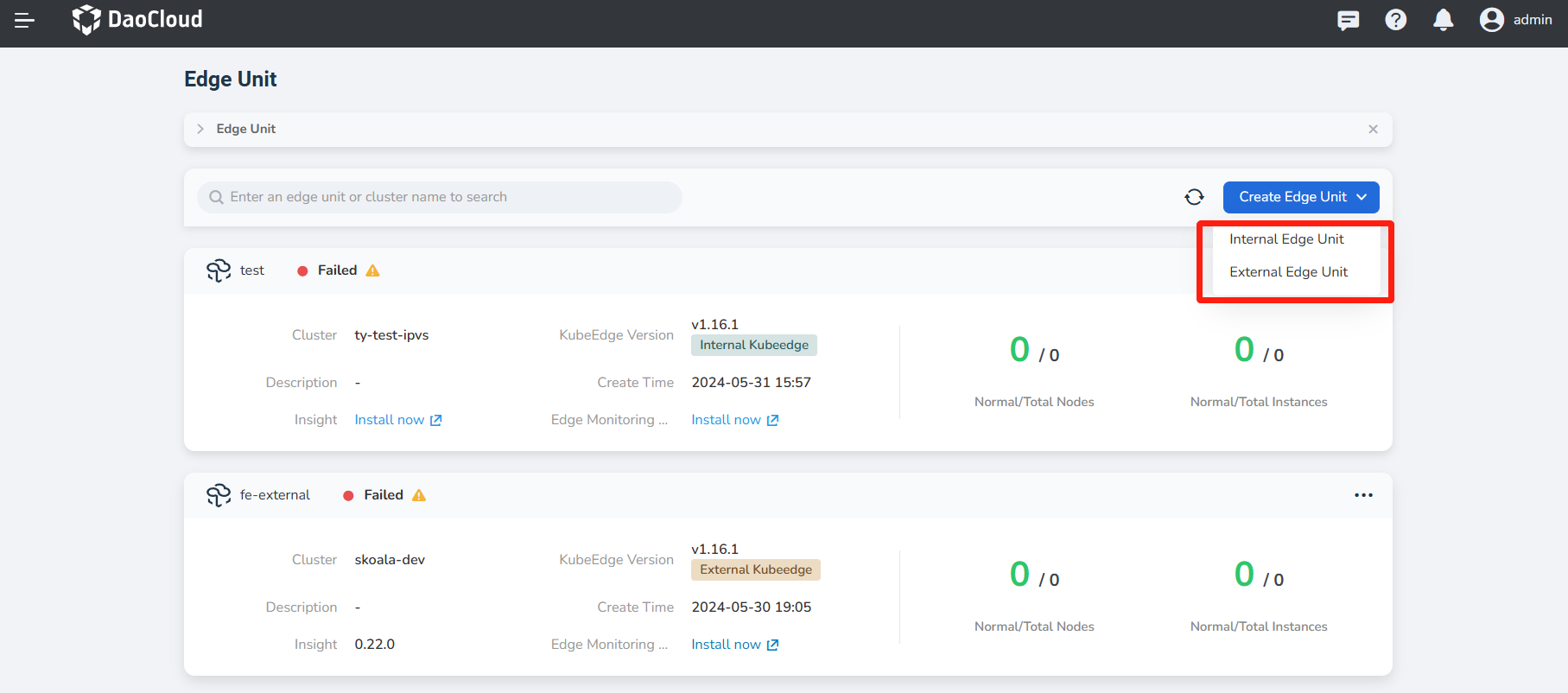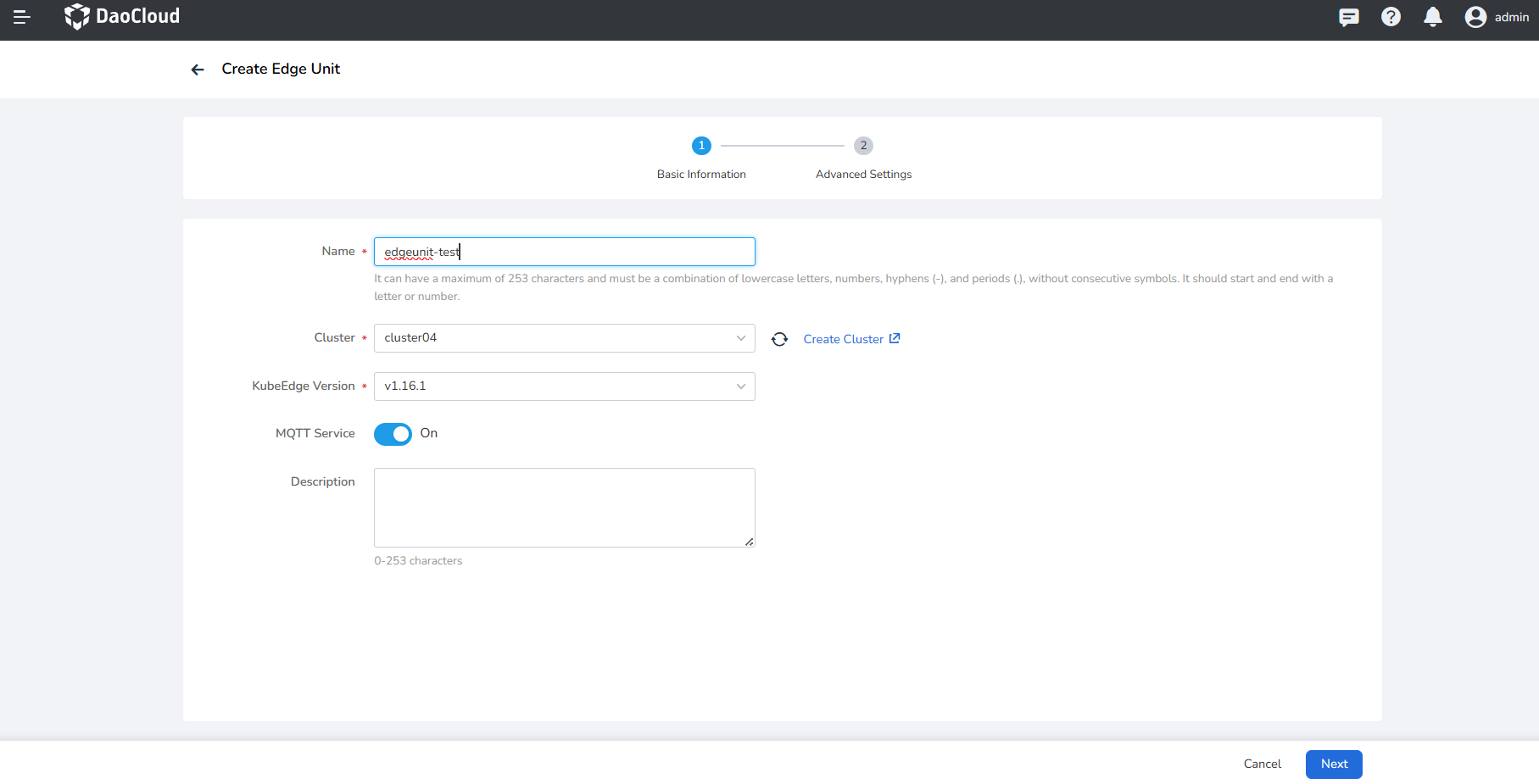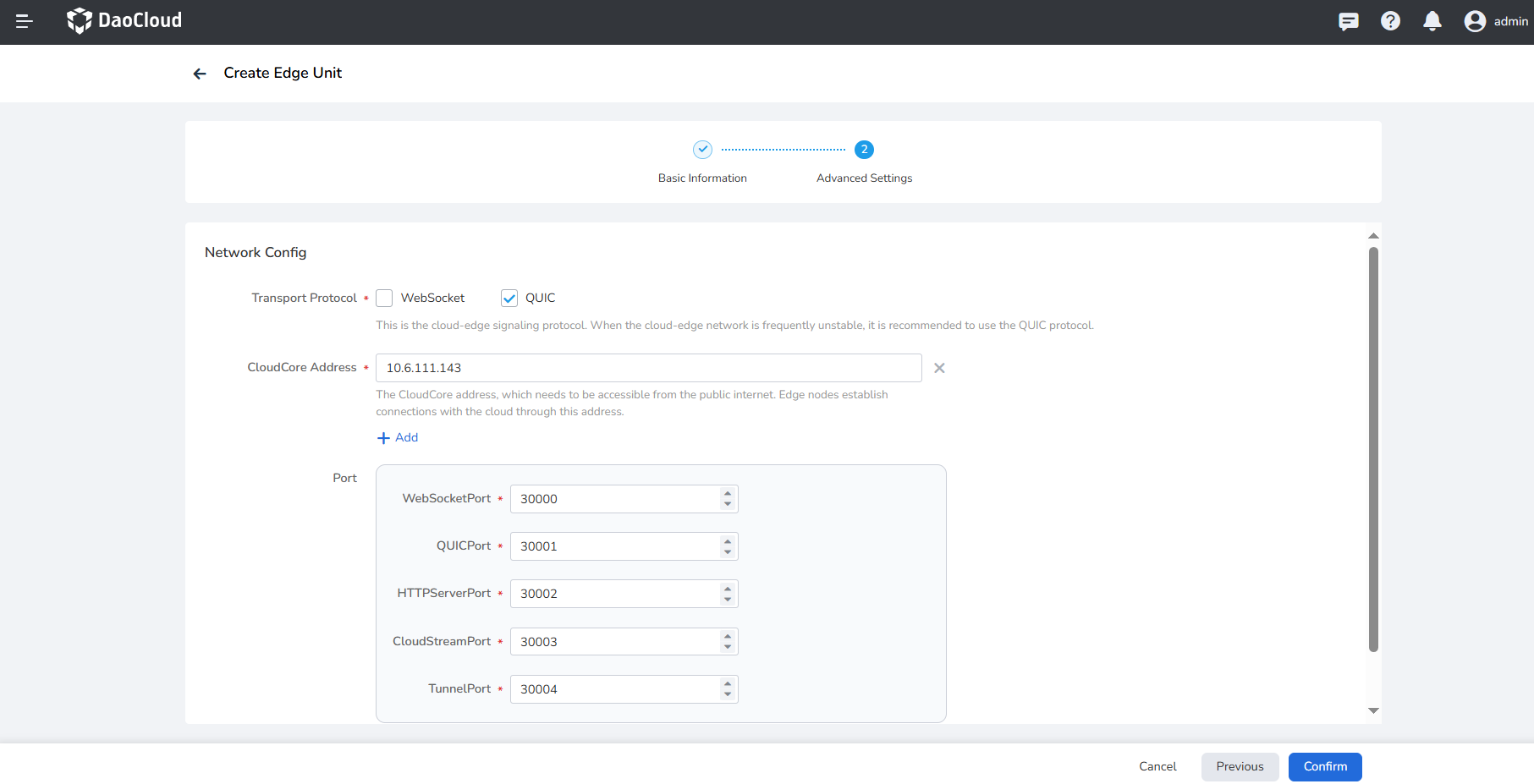Create Internal Edge Unit¶
Edge unit definition: It refers to the collection of computing resources required for container runtime, including the cloud-side Master and edge-side worker Nodes. The concept of an edge unit is similar to a cluster in Kubernetes, but the networking is different. The Master node is deployed in the cloud, and one cloud-side master (with multiple backups) corresponds to one edge cluster.
Business of edge units: Install the KubeEdge Cloud Suite (CloudCore, ControllerManager) on the specified worker cluster and manage it throughout its lifecycle. KubeEdge: It is an open-source system that extends native containerized application orchestration capabilities to edge nodes.
- CloudCore: KubeEdge cloud-side core component.
- ControllerManager: KubeEdge CRD extension, currently applied to edge applications and edge node groups.
DCE 5.0 Cloud Edge supports two types of edge units:
-
Internal Edge Unit is to install the KubeEdge cloud suite (CloudCore, ControllerManager) for a specified worker cluster and manage it throughout its lifecycle.
-
External Edge Unit refers to integrating the existing KubeEdge installed in the enterprise system into DCE 5.0 Cloud Edge for unified management. See Creating External Edge Unit
Steps¶
The following steps explain how to create an edge unit:
-
Select Cloud Edge Collaboration from the left navigation bar to go to the edge unit list page. Click the Create Edge Unit button in the top-right corner of the page, and select Internal Edge Unit from the dropdown list;

-
Fill in the basic information:
- Name: A combination of lowercase letters, numbers, hyphens (-), and dots (.), and it should not have consecutive separators. It should start and end with a letter or number. contains a maximum of 253 characters.
- Cluster: The cluster where the edge unit control plane runs.
- KubeEdge Version: A specific version released by the KubeEdge open-source system, used to extend containerized application orchestration capabilities to edge hosts. It is built on Kubernetes and provides infrastructure support for network applications.
- MQTT Service: Whether to enable the default KubeEdge MQTT service (mosquitto) in the edge node, primarily used for message routing and communication with device mappers.
- Description: Description of the edge unit.

-
Fill in Advanced Settings
Note
If you use the online installation method, you only need to complete the access configuration. If you use the offline one, you also need to provide the component repository information.
Access Settings
It refers to the access settings for KubeEdge cloud components. Edge nodes use these settings to establish a connection with the cloud.
- Communication Protocol: the communication protocol for the cloud-edge signaling channel. When the cloud-edge network is frequently unstable, it is recommended to use the QUIC protocol.
- Access Address: the access address for the KubeEdge cloud component CloudCore, which needs to be accessible by edge nodes. Edge nodes use this address to establish a connection with the cloud.
- Ports: CloudCore on the cloud side opens NodePort ports to the edge by default. If there is a conflict, please modify them.
- WebSocketPort: the port for the WebSocket access protocol, default is 30000.
- QUICPort: the port for the QUIC access protocol, default is 30001.
- HTTPServerPort: the HTTP service port, default is 30002.
- CloudStreamPort: the cloud stream processing interface port, default is 30003.
- TunnelPort: the data channel port for edge node business data, default is 30004.

-
After completing the configuration, click the OK button to create the edge unit. You will be automatically redirected back to the edge unit list.
Next: Managing Edge Units